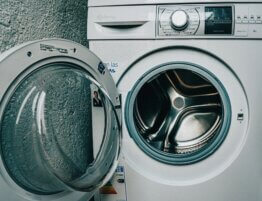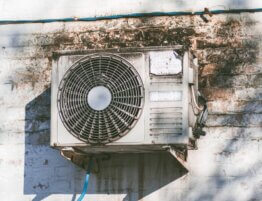
Up to half of the energy use in your home comes from your HVAC system. This is why it plays such a big role in the energy efficiency of your house.
The thermostat acts as the control panel for your cooling and heating unit. It’s how you keep your home at the desired temperature.
It’s easy to assume you have an issue with your HVAC unit when things start malfunctioning. However, your thermostat may be the culprit.
Let’s go over how to tell if your thermostat is broken so you can rule out major HVAC issues.
Your HVAC System Won’t Turn On or Off
If you notice your heating or cooling not turning on or off when it’s supposed to, don’t assume right away there’s a problem with the unit itself. There may be an issue with your thermostat instead.
If your thermostat is in an area of your home that gets hotter or colder than the rest of the house, this could present a problem. The temperature of the air around the thermostat is what dictates when it turns off and on.
Therefore, if you’ve set your system at 72 degrees, but the air around your thermostat is 78, it won’t turn off when it needs to. This typically happens if the thermostat is in a bad spot, like near a window.
You may also have a wiring issue on your hands. This is affecting the way your thermostat triggers the HVAC unit on or off.
This is a major problem in the summer and winter months. It can make your home very uncomfortable and also boost monthly energy bills.
Inconsistent Temperatures Throughout Your Home
Are you noticing that some rooms in your home are either warmer or cooler than others? This is another sign of a potential thermostat issue.
This variance in temperature will happen if your HVAC unit is turning on and off when it isn’t supposed to. The result is an uneven distribution of warm or cool air.
You may also notice your HVAC system starting to short-cycle. This means your unit fails to complete an entire cooling or heating cycle. Instead, it shuts off prematurely.
The result of both of these scenarios is an uncomfortable home. In addition, if your HVAC unit isn’t turning off when it should, this means it’s taxing itself.
The Thermostat is Unresponsive
When you change the settings on your thermostat, your HVAC system should respond within 30 seconds. You’re probably familiar with the clicking sound when this happens.
However, if you fail to get a response, you could have an issue with the thermostat. There could be a wiring issue or other problem you need to investigate.
Another sign of a problem is the display screen on the thermostat malfunctioning. If it’s flickering or completely dead, it’s likely there’s no signal getting sent from the thermostat to the HVAC unit.
Settings Don’t Match the Temperature
Your thermostat may also have an issue detecting the proper temperature of the air around it. If this is the case, the temperature in your home won’t match what’s displayed on the thermostat.
However, confirming a discrepancy between what the display says and the actual temperature may be difficult. You’ll need to do a little investigating.
If you have a thermometer you use on an outdoor patio, bring it inside and put it next to your wall thermostat. Wait about thirty minutes for it to acclimate and then check the reading. If you notice a difference, you have an issue with your thermostat.
Troubleshooting the Issue
If you’ve confirmed that you have an issue with your thermostat, there are a few things you can do to troubleshoot the issue. This will let you know if you need to have a professional make repairs or install a replacement.
However, if the issue is minor, you may be able to fix it yourself. You simply need to know what to look for.
Remember, if your thermostat is causing your HVAC unit to work unnecessarily hard, you need to address the problem right away. The last thing you want is to cause damage to your unit because of a thermostat problem.
Let’s look at some ways to troubleshoot the issue.
Make Sure It’s on the Right Setting
This may sound too simple, but you should first check to ensure your unit is on the right setting. There’s a chance someone in your home made a mistake while adjusting it.
For example, if the thermostat is accidentally set to “on,” it will run continuously. If it’s off, it won’t run at all.
You should also check to ensure it didn’t accidentally get turned to a temperature that’s causing it to run too much or not at all.
Check the Cleanliness
Cleaning the thermostat isn’t a common household chore. However, a buildup of dirt and grime could cause issues.
To check on this, remove the front panel and look inside. If you notice dirt, use compressed air to clean it out. Then, replace the panel and test it to see if that did the trick.
Replace the Batteries
It’s common for dead batteries to be the cause of issues. Fortunately, this is an easy and affordable repair.
Simply remove the panel and you should see the batteries.
Check the Circuit Breaker and Fuse
Like other major appliances, your thermostat is part of the electrical system of your home. This means it’s controlled by a circuit breaker.
If the circuit trips, the thermostat won’t work. You’ll just need to look at that specific circuit in your breaker box to make sure it’s flipped on.
A blown fuse inside your thermostat will cause the device to malfunction. You’ll need to open the panel and locate the fuse.
This is a small, clear cylinder with metal ends and a filament running through the center. If this filament brakes, the fuse has blown and will need replacing.
Know How to Tell if Your Thermostat is Broken
HVAC repair can be costly and inconvenient. Don’t mistake a problem with your thermostat with something major.
Knowing how to tell if your thermostat is broken is the first step in diagnosing the problem. Then, do a little troubleshooting to determine if you need professional repair or replacement.
We provide a wide range of HVAC and plumbing services. Contact us today for help.










